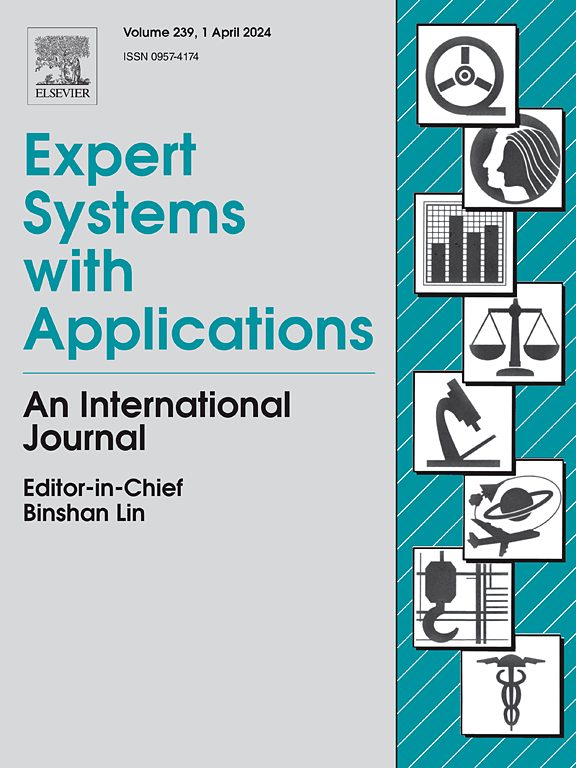具有结构稀疏性和指示图-拉普拉斯正则化的一步时间子空间聚类
IF 7.5
1区 计算机科学
Q1 COMPUTER SCIENCE, ARTIFICIAL INTELLIGENCE
引用次数: 0
摘要
子空间聚类(SC)是一种有效分割驻留在多个子空间中的数据的强大技术。然而,传统的SC方法由于其捕获时间依赖性的能力有限,往往不能准确地聚类时间数据。这些方法通常采用两步框架:首先,从数据中学习关联矩阵;其次,利用亲和矩阵进行谱聚类,构造指标矩阵,实现最终分割;这种脱节的过程忽略了亲和矩阵和聚类分配之间的相互依赖性,因此不能充分利用序列数据固有的时间平滑性,相邻样本通常是相似的。为了解决这些限制,我们提出了一种新的一步时间子空间聚类方法,该方法集成了结构化稀疏性和指示图-拉普拉斯正则化,称为sil。我们的方法在两个关键方面改进了现有的临时SC技术。首先,我们直接在指标矩阵上引入时间指标图-拉普拉斯(IL)正则化,提高了聚类结果的时间平滑性,增强了聚类结果与基础真值之间的一致性。其次,在统一的优化框架内,结合结构化稀疏性(SS)来共同学习亲和矩阵和指标矩阵。我们进一步开发了一种高效的优化算法来交替求解亲和矩阵和指标矩阵。在六个基准数据集上的大量实验,特别是在运动捕捉数据上的实验,证明了我们的方法的有效性和与几种最先进的方法相比的优越性能。本文章由计算机程序翻译,如有差异,请以英文原文为准。
One-step temporal subspace clustering with structured sparsity and indicator graph-Laplacian regularization
Subspace clustering (SC) is a powerful technique for effectively segmenting data residing in multiple subspaces. However, traditional SC methods often fall short in accurately clustering temporal data due to their limited ability to capture temporal dependencies. These methods typically adopt a two-step framework: first, an affinity matrix is learned from the data; second, spectral clustering is performed using the affinity matrix to construct the indicator matrix for achieving the final segmentation. This disjointed process neglects the interdependence between the affinity matrix and the cluster assignments, and hence fails to fully exploit the temporal smoothness inherent in sequential data, where neighboring samples are usually similar. To address these limitations, we propose a novel one-step temporal subspace clustering method that integrates Structured Sparsity and Indicator graph-Laplacian regularization, termed SSIL. Our approach improves upon existing temporal SC techniques in two key aspects. First, we introduce a temporal Indicator Graph-Laplacian (IL) regularization directly on the indicator matrix, which promotes temporal smoothness and enhances alignment between the clustering result and ground truth. Second, we incorporate Structured Sparsity (SS) to jointly learn the affinity and indicator matrices within a unified optimization framework. We further develop an efficient optimization algorithm to alternatingly solve the affinity and indicator matrices. Extensive experiments on six benchmark datasets, particularly on motion capture data, demonstrate the effectiveness of our method and its superior performance compared to several state-of-the-art approaches.
求助全文
通过发布文献求助,成功后即可免费获取论文全文。
去求助
来源期刊

Expert Systems with Applications
工程技术-工程:电子与电气
CiteScore
13.80
自引率
10.60%
发文量
2045
审稿时长
8.7 months
期刊介绍:
Expert Systems With Applications is an international journal dedicated to the exchange of information on expert and intelligent systems used globally in industry, government, and universities. The journal emphasizes original papers covering the design, development, testing, implementation, and management of these systems, offering practical guidelines. It spans various sectors such as finance, engineering, marketing, law, project management, information management, medicine, and more. The journal also welcomes papers on multi-agent systems, knowledge management, neural networks, knowledge discovery, data mining, and other related areas, excluding applications to military/defense systems.
 求助内容:
求助内容: 应助结果提醒方式:
应助结果提醒方式:


